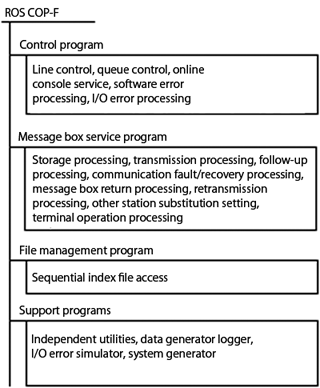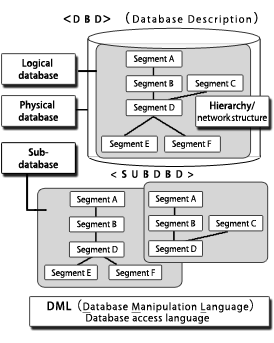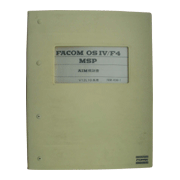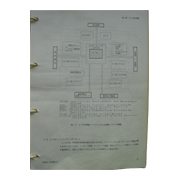The history of Fujitsu's online databases dates back to the 1960s, the beginning of online use of computers. Fujitsu's online processing and database management technology, which had been evolving independently, was fully integrated into AIM (Advanced Information Manager) for the FACOM M series after the step of integration into online databases called INIS (Integrated Information System) and RICS (Real time Information Control System).
1.Progress of online processing technology
1st stage (1966 to 1971): Online processing technology of Fujitsu was provided in the form of single-capability packages corresponding to processing types (message exchange, real-time processing, etc.) mainly due to the limitations of memory size. Representative products included “online package programs” for FACOM 230-20 and
FACOM 230-30/
50.
2nd stage (1970 to 1974): Because online use of computers had been becoming more widespread, online processing products of Fujitsu accordingly evolved into general-purpose packages that were able to be applied to any online processing type. These packages were lightweight SOM (Standard Online Modules) and COP (online COmmon Package) for large-scale systems. During this period, a number of important functions (see Figure 1) were developed. Representative products included
FACOM 230-35 BOSII SOM,
ROS COP-F and
FACOM 230-60 MONITOR V COP-F.
 Figure 1 Functional configuration of ROS COP-F
Figure 1 Functional configuration of ROS COP-F2.Progress of database management technology
1st stage (1968 to 1971): The focus was placed on provision of the technology for specific targets such as random access device support and “material explosion” processing. Representative products included
FACOM 230-25/35
BOS EPOCS (Engineering and Production Oriented Control System) and FACOM 230-60 MONITOR V RAPID (Retrieval And Production for Integrated Data).
2nd stage (1970 to 1974): The company developed the technology that would be bases of Fujitsu’s databases through full adoption of “the database concept” and though the experiences gained in the 1st stage. These were the concept of data independence such as DBD and SUBDBD, CODASYSL-type hierarchy/network data structure and DML (see Figure 2). Representative products included
FACOM 230-45S/55 OSII RAPID and FACOM 230-60 MONITOR V FMS (File Management System).
 Figure 2: Schematic of the functions of RAPID and FMS
Figure 2: Schematic of the functions of RAPID and FMS3.Online databases
3rd stage (1973 to 1978): To meet the requirement of evolving sophistication of computer applications, the company developed integrated and extended online database products based on the technological know-how accumulated in the 2nd stage. Representative products included INIS and RICS of
OSII/VS for
FACOM 230-38/48/58. INIS, a simplified online database, was based on SOM and RAPID. RICS, a full-scale online database, was based on COP and RAPID.
FACOM 230-75 MONITOR VII COP-F, which was designed for large-scale systems, also increased the compatibility with FMS and evolved into an online database. Online databases were also called DB/DC (database/data communication).
4th stage (1977 onward): The FACOM M series AIM was an online database developed as an amalgamation of Fujitsu technology, and its first version was shipped in 1977. It operated on all OSs of the OSIV series. The AIM was characterized by advanced integration based on the transaction concept, including an automatic recovery function in addition to functional enhancements for online processing and database management. Through the enhancement to support for the 3rd-stage banking system in the late 1980s in Japan, the product evolved into AIM V12 and AIM V20 with substantial strength of the ability to support large-scale systems and fault tolerance. The AIM family included AIM/ACS (Application Control Support system), AIM/RDB and AIM/SRCF (Shared Resource Control Facility).





